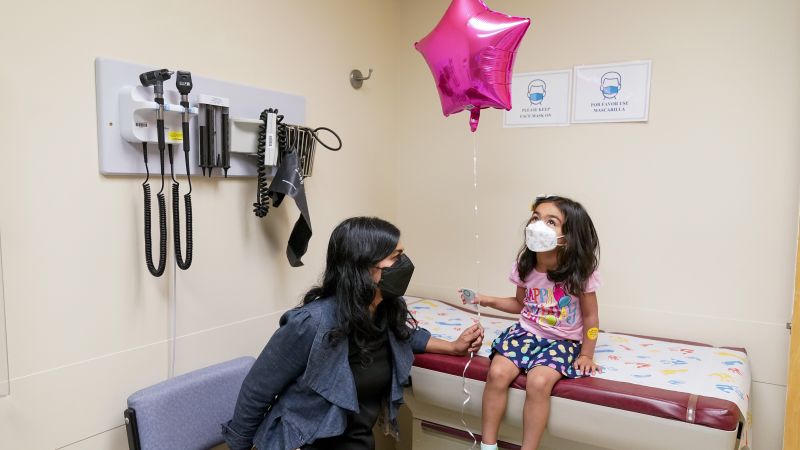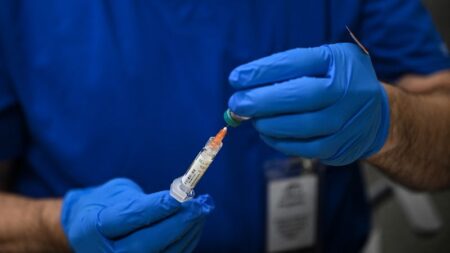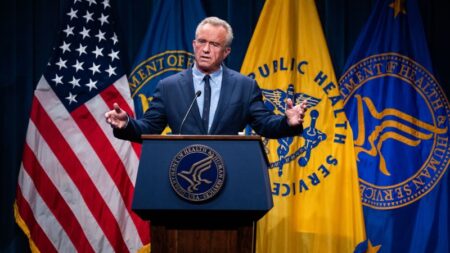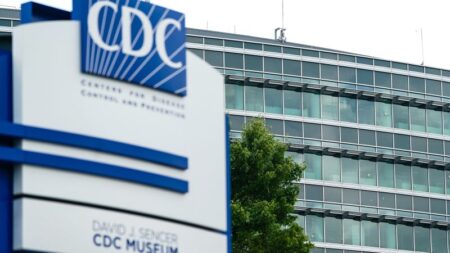The American Academy of Pediatrics (AAP) has recently changed its stance on vaccination recommendations, particularly regarding COVID-19 shots for infants and young children. On a Tuesday, the AAP announced an updated set of guidelines that stand in contrast to the current recommendations from the Centers for Disease Control and Prevention (CDC), which is a federal agency responsible for public health. This divergence raises significant implications for pediatric health practices across the United States.
The new AAP recommendations emphasize the necessity for all children aged 6 to 23 months to receive the COVID-19 vaccine, except in cases of known allergies to the vaccine or its components. In contrast, the CDC’s current guidelines suggest that vaccination for children aged 6 months to 17 years should be based on collaborative decision-making between healthcare providers and families. Notably, the AAP also recommends a single vaccine dose for children aged 2 to 18 who are considered at high risk for severe COVID-19, those who reside in long-term care facilities, or those living in households with members at high risk.
Historically, the AAP has produced its own vaccine schedules while remaining consistent with the recommendations from federal health authorities. However, this latest initiative suggests a shift toward independent decision-making, prompted by concerns over vaccine misinformation and access exacerbated by the recent overhaul of the Advisory Committee on Immunization Practices (ACIP). This committee is essential in guiding immunization policies but has experienced tension with the AAP, particularly following changes that included dismissing long-standing members and substituting them with individuals perceived to be more aligned with a narrative critical of current vaccine policies.
Dr. Sean O’Leary, who chairs the AAP Committee on Infectious Diseases, indicated the AAP’s decision to withdraw from the ACIP meeting in June was due to its belief that the restructuring rendered the committee illegitimate. This perspective highlights the growing apprehension among pediatric health professionals regarding what they view as a deviation from scientifically-backed practices in vaccination policies. O’Leary articulated concerns about the “false narrative” surrounding vaccine policy flaws and the necessity for revisions.
In an email disclosed in August, the American Medical Association (AMA) and about 30 other medical organizations were informed that they would be removed from their roles as ACIP liaisons. The correspondence characterized them as “special interest groups” and raised questions about potential biases in their recommendations. This move points to an ongoing struggle for influence and authority in shaping vaccination guidelines amid rising skepticism towards established health organizations.
Implications resonate beyond mere recommendations; they touch on statutory frameworks governing healthcare. For instance, under the Affordable Care Act, vaccine coverage by insurance providers hinges on ACIP recommendations. The committee’s endorsement also plays a crucial role in determining access to vaccines for children, especially those who cannot afford them, through the federal Vaccines for Children program.
In its announcement, AAP underscored the importance of insurance providers covering the vaccines it recommends, aiming to ensure that all children have access to necessary immunizations. AAP President Dr. Susan J. Kressly reiterated the organization’s commitment to providing evidence-based immunization guidelines to promote the health and well-being of infants, children, and adolescents.
In addition to bolstering vaccine recommendations for COVID-19, the AAP also updated guidelines regarding vaccines for respiratory syncytial virus (RSV) and influenza, along with over ten other vaccines. However, challenges remain on the horizon, particularly concerning potential restrictions on access to vaccine doses. The US Food and Drug Administration (FDA) has hinted at the possibility of limiting future COVID-19 vaccines to older individuals and those with high vulnerabilities, with discussions surrounding authorization for Pfizer’s vaccine for children under five years old also posing a challenge.
In summary, the AAP’s recent initiatives represent both an affirmation of its role as a key authority in pediatric health and a response to an evolving and complex landscape surrounding vaccination. The growing discord between AAP recommendations and federal guidance underscores significant tensions in public health that will continue to impact children’s healthcare in the United States.












